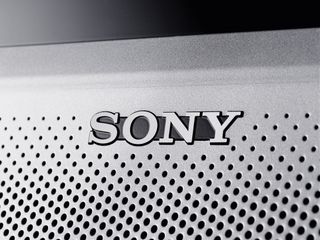
When it comes to the world’s biggest tech brands, most of us would be able to pick out Apple, Samsung, Sony and others as our favourites. But would you buy a TV from Tokyo Tsushin Kokyo, or a DVD player from Tanaka Seizo-Sho? If the answer’s no, then you should read on... We’ve picked nine of the world’s biggest brands so you can discover how they made their names
Samsung
This Korean colossus is a relative newcomer to consumer tech, starting the Samsung-Sanyo Electric Company as recently as 1969. Its roots go back to 1938 though, when founder Byung-Chull Lee started up a dried fruit, vegetable and fish export business. By the late 1970s, Samsung’s interests included petrochemical, construction, textile and ship-building industries, the company owned a string of hotels and was exporting colour TVs.
A decade later it was also making planes, dabbling in space technology and making the world’s smallest video recorders. Today Samsung is vying with Sony for title of world’s biggest consumer electronics maker and spends £0.85 billion a year on R&D. Samsung is the Korean name for ‘three stars’ - which is handy, as that’s the review score many of the company’s products get ;-)
Sony
Somewhat surprisingly Sony is actually younger than its Korean arch-rival, appearing in 1946 as Tokyo Tshushin Kokyo (aka Totsuko) Its first product was a rice cooker. The Sony brand - which is a conflation of Sonus, the Latin word for sound and Sonny (as in ‘young boy’) - first appeared in 1955. Totsuko became Sony Corporation three years later.
Early successes were the TR-55 transistor radio, TV5-303 portable TV and, of course, the TPS-L2 Walkman. Sony’s had something of a chequered past: it's enjoyed notable successes with CD, DVD and the PS3; but it’s just as famous for its flops - MiniDisc, DAT and Betamax. It also likes to provoke the ire of its customers - firstly with 2005’s root-kit disaster and then a year later with 2006’s exploding laptop battery epidemic, which saw 8 million Sony-made Li-Ion batteries being recalled.
Get daily insight, inspiration and deals in your inbox
Get the hottest deals available in your inbox plus news, reviews, opinion, analysis and more from the TechRadar team.
Apple
When Steve Jobs and Steve Wozniak launched Apple Computer in 1976, its choice of name was obvious - Jobs was a massive Beatles fan, and so he named the company after the Beatles-owned record label Apple Records. That decision quickly backfired when The Beatles’ holding company Apple Corps took Apple Computer to court over the use of the name - the beginning of a 30-year battle that ended with Apple Computer buying the Apple brand from The Beatles in 2007.
Mac OS 7 famously featured a system sound whose name arose as a result of a 1991 legal battle that forbade Apple Computer from having anything to do with music. Apple’s legal department decided that the name of one OS 7 sound ‘chimes’ was too musical-sounding. Apple engineer Jim Reekes tried to change the name to Let It Beep, but eventually settled on Sosumi (‘so sue me’), explaining to Apple’s lawyers that it was a Japanese word and had nothing to do with music at all.
Sharp
The Japanese LCD TV giant took its name from one of its first ever products - the Ever-Ready Sharp propelling pencil (later the Ever-Sharp pencil), which made its debut in 1916. The company was originally named Hayakawa Brothers Shokai, partly after Tokuji Hayakawa who had invented the pencil in 1915. Sharp first moved into consumer electronics in 1925 when the company began mass-producing crystal radios - the first Japanese manufacturer to do so.
Famous for iPhone-baiting touchphones, as well as fridges, microwaves and TVs, LG is the abbreviated result of the merger between two different companies - Lucky, which made household products and GoldStar which fashioned cheap consumer electronics. The GoldStar name eventually disappeared in 1995, when the company was renamed LG Electronics, partly as the result of a push upmarket.
